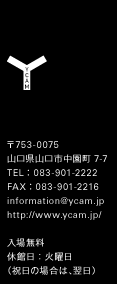NOTE
“Double existence: Desire of Codes”
Text: Seiko Mikami
Desire of Codes is a “twofold existence” themed interactive installation that explores individual existence from the boundary between public and private, with the ultimate aim to highlight the increasingly blurred dividing line between “the body defined by data” and “the body of flesh and blood”.
In today’s information society, one can say that swirling desires keep accelerating new desires, resulting in a spirally developing twofold identity of the individual, with personal data being exposed, reflected, analyzed and updated. For example, let’s assume I buy a teddy bear book as a birthday present via the Internet. The Internet then stores my data in the category of “people who are interested in teddy bear books,” and eventually keeps sending me e-mails recommending “products that other customers who bought teddy bear books also bought” from categories that don’t interest me at all. Such “people who likes teddy bear books” eventually appear in front of me one after another, and all those data are certainly stored somewhere. Once such ”data of desires” are hammered into my mind, the fact that they are ”desires” means that they don’t disappear but rather multiply. The user’s behavior records are visualized in graphical charts, and his behavior is still being traced in this moment.
Search engines such as Google accumulate information directly out of our brains – information that we aren’t even aware of yet. At some point, the various keywords I’ve come up with and typed into search engines in order to find something I was after have perhaps transformed into a mirror of myself. Even after death, we will probably remain floating around the Internet in the form of coded skeletons of e-mail and other data. The “double existence” is not only a matter of the Internet. For example, a look at all the data of receipts, credit and membership cards collected during yesterday’s shopping tour tells you that you bought bread at A in the morning, took a train to B, got some C at D, borrowed a video of E at F, et cetera. The sum of these data can be analyzed as a manifestation of your true self, which inspires the question whether it is your actual body of flesh and blood that defines your identity, or if you are in fact nothing but an accumulation of data. Now what if your identity card and your personal code came with their own desires as well? The problem of personal data is going to gain weight in the future, and it is not unlikely that your passports, annual income, spending, taxes, traffic violation records, hospital records, and all kinds of other personal information will be stored in one single code, as it is already the case in the “Juki Net” resident registry network. Above that, given that this will not only contain your own medical records, but coded data of the DNA that had previously determined what illnesses were to cause the deaths of your grandfathers and even earlier generations, it is possible that these codes will be analyzable to the extent that they suggest details of your future illnesses, and ultimately, your death.
These codes refer to the written source codes describing commands in programming language. The source codes are defined according to the specifications of the programming language used, and by transforming these, the computer can read the commands. On the other hand, codes in a biological sense generally refer to genetic codes. I am creating artworks not simply with the aim to sound warnings about such issues, but my intention is to highlight matters of “existence” related to the question expressed at the beginning of this text. ”Is the real you defined by your data, or by your actually existing body of flesh and blood? ” If codes have desires, we can consider these as reflections of our own desires.

